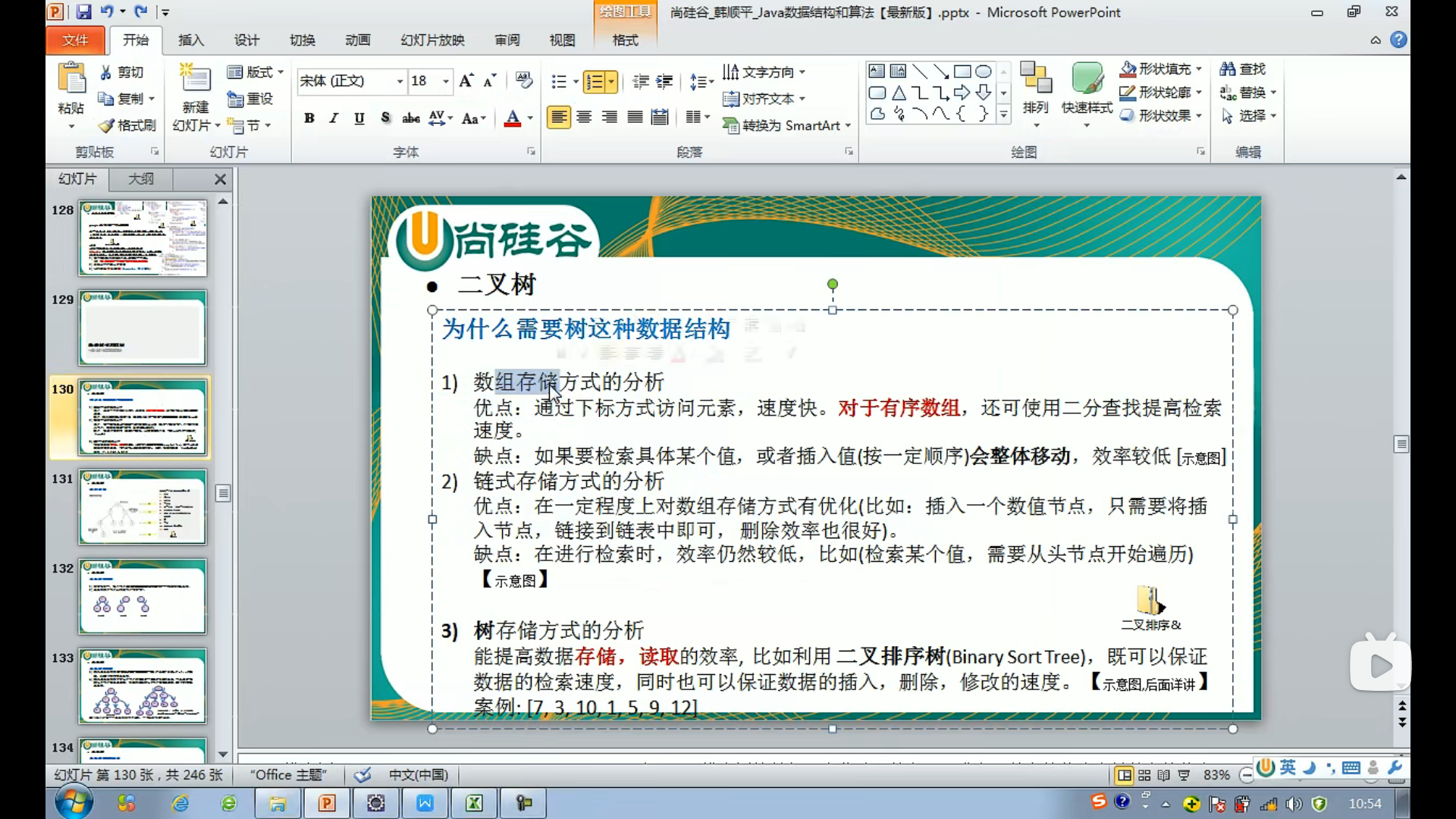

前,中,后序遍历:
前:父节点->左子树->右子树
中:左->父->右
后:左->右->父
public class erchashu {
public static void main(String[] args) {
Binarytree tree=new Binarytree();
node1 root=new node1(1,"宋江");
node1 n2=new node1(2,"吴用");
node1 n3=new node1(3,"卢俊义");
node1 n4=new node1(4,"林冲");
node1 n5=new node1(5,"f");
//构建二叉树,设置左右树
root.setLeft(n2);
root.setRight(n3);
n3.setRight(n4);
n3.setLeft(n5);
tree.setRoot(root);
//中序遍历二叉树
tree.infixOrder1();
System.out.println("search");
//前序搜索二叉树
node1 resnode=tree.presearch1(2);
if(resnode!=null){
System.out.println(resnode.getName());
}
}
}
//树
class Binarytree{
//根节点,是下面node1定义的节点,所以可以调用node1中的方法
private node1 root;
public node1 getRoot() {
return root;
}
public void setRoot(node1 root) {
this.root = root;
}
//调用node1的方法
public void preOrder1(){
if(this.root!=null){
this.root.preOrder();
}else{
System.out.println("null");
}
}
public void infixOrder1(){
if(this.root!=null){
this.root.infixOrder();
}else{
System.out.println("null");
}
}
public void postOrder1(){
if(this.root!=null){
this.root.postOrder();
}else{
System.out.println("null");
}
}
//查找
//调用node1里面的查找方法
public node1 presearch1(int no){
if(root!=null){
return root.presearch(no);
}
else{
return null;
}
}
}
class node1{
int no;
String name;
node1 left;
node1 right;
public node1(int no,String name){
this.no=no;
this.name=name;
}
@Override
public String toString() {
return "node1{" +
"no=" + no +
", name='" + name + '\'' +
", left=" + left +
", right=" + right +
'}';
}
//前序遍历
//先打印出当前父节点,再打印左子树,用递归把左子树全部打印出来。再打印右子树
public void preOrder(){
System.out.println(this);
if(this.left!=null){
this.left.preOrder();
}
if(this.right!=null){
this.right.preOrder();
}
}
//中序遍历
public void infixOrder(){
if(this.left!=null){
this.left.infixOrder();
}
System.out.println(this);
if(this.right!=null){
this.right.infixOrder();
}
}
//后序遍历
public void postOrder(){
if(this.left!=null){
this.left.postOrder();
}
if(this.right!=null){
this.right.postOrder();
}
System.out.println(this);
}
//查找目标节点,用前序遍历。
//先判断当前父节点是不是就是要找到数
public node1 presearch(int no){
node1 res=null;
if(this.no==no){
return this;
}
if(this.left!=null){//再判断左子树。如果左子节点不是空,就递归遍历左子树,找目标树
res=this.left.presearch(no);
}
if(res!=null){
return res;
}
if(this.right!=null){
res=this.right.presearch(no);
}
return res;
}
public node1 infixsearch(int no){
node1 res=null;
if(this.left!=null){
res=this.left.infixsearch(no);
}
if(res!=null){
return res;
}
if(this.no==no){
return this;
}
if(this.right!=null){
res=this.right.infixsearch(no);
}
return res;
}
public int getNo() {
return no;
}
public void setNo(int no) {
this.no = no;
}
public String getName() {
return name;
}
public void setName(String name) {
this.name = name;
}
public node1 getLeft() {
return left;
}
public void setLeft(node1 left) {
this.left = left;
}
public node1 getRight() {
return right;
}
public void setRight(node1 right) {
this.right = right;
}
}
删除节点

顺序存储:
通常只考虑完全二叉树。
第n个元素左子节点为2n+1.
右子节点为2n+2,
父节点为:(n-1)/2
n表示二叉树中的第几个元素,从0开始算的(下标)
前序遍历:
public class try4 {
public static void main(String[] args) {
int[] a={1,2,3,4,5,6,7};
try4 t=new try4(a);
t.preorder();
}
private int[] arr;
public void preorder(){
this.preorder(0);
}
public try4(int[] arr) {
this.arr = arr;
}
public void preorder(int index){
if(arr==null||arr.length==0){
System.out.println("null");
}
System.out.println(arr[index]);
if((2*index+1)<arr.length){
preorder(2*index+1);
}
if((2*index+2)<arr.length){
preorder(2*index+2);
}
}
}



 浙公网安备 33010602011771号
浙公网安备 33010602011771号